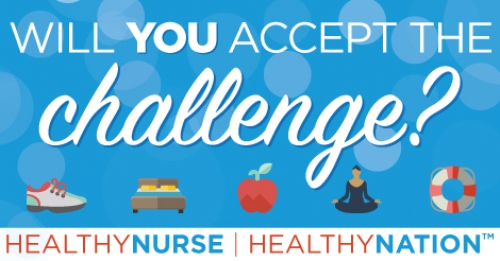ANA Healthy Nurse, Healthy Nation® Champion Spotlight Series: New Mexico Nurses Association
Published
State nurses association advocates for climate-related health measures that protect the community

According to the National Centers for Environmental Information, there were 24 climate disasters with losses over a billion dollars in the U.S. between January and November 2024. That number exceeds the average for the previous 5 years by over 17%.
These climate events included winter storms, hurricanes, tornadoes, wildfires, and floods. They had a devastating impact on communities across the country, causing loss of life and loss of homes and businesses. People in affected communities also faced challenges related to unsafe drinking water, air pollution, and access to shelter and medical care.
In the state of New Mexico, communities face a higher wildfire risk than nearly 80% of the country. And the desert landscape increases the risk of flash floods during rainy seasons. In October 2024, record-breaking rain caused catastrophic flooding in the city of Roswell and surrounding areas.
“Climate-related disasters cause a whole host of public health issues,” says Eric Riebsomer, DNP, RN. Eric serves on the board of directors for the New Mexico Nurses Association (NMNA). “There’s a huge need for awareness throughout our communities and governments about disaster preparedness and prevention. As we’ve seen this year, disasters can happen anywhere at any time.”
To address climate-related health issues in its home state, the NMNA created New Mexico Nurses for Climate Health in 2022. This special interest group advocates for education and legislation to protect communities from climate events.
Local Advocacy for New Mexico Climate and Health Concerns
Geography plays a role in the types of climate events a community may experience, Eric says. For example, people who live in regions that experience hurricanes may have different issues than those who experience wildfires.
“In New Mexico, we have more wildfires and floods,” he says. “This leads to poor air and water quality, which impacts respiratory and cardiovascular health and causes water-related illness. And as a rural state, we also have more health inequity in terms of access to resources and medical care.”
Nearly 70% of New Mexico residents live in areas with a significant risk of climate events like wildfire or flooding. Only 7 states in the U.S. have a higher number of residents at risk.
The NMNA recognized the need for a nursing voice in advocating on behalf of New Mexico’s vulnerable populations. The passionate team involved in New Mexico Nurses for Climate Health works to spread awareness of the state’s climate-related health challenges.
“As nurses, we are on the front line, caring for patients with medical and mental health issues that result from disasters,” Eric says.
“Because we see it first-hand, we have a unique perspective on the many ways our climate impacts public health. Advocating for legislation is an important way to effect meaningful change in our communities.”
Legislative Action
One of the first efforts undertaken by NMNA’s climate health team was legislation to create a new organization within the New Mexico Department of Health.
“We worked with New Mexico lawmakers to design a program to fund much-needed disaster preparedness equipment. The program would also collect data on wildfires and other events to help preparation efforts,” Eric says.
Although the legislation passed both New Mexico House and Senate committees, it wasn’t signed into law. Still, Eric says the effort was worthwhile because it demonstrated that lawmakers had a significant interest in disaster prevention.
“It moved the needle,” he says. “We will continue to spread awareness and partner with legislators to create the changes our community needs.”
Supporting the Nursing and Health Care Community
The NMNA team also provides tools, education, and resources on climate health to nurses and organizations throughout the state.
“We aim to help nurses and health care staff recognize when patients experience climate-related medical issues,” he says. “For instance, if a patient has an exacerbation of COPD after a wildfire, we need to connect the dots. When we make that connection, we can support the patient better. We can educate them on how to protect themselves at home.”
Eric says the NMNA climate health team focuses on outreach through summits and conferences. They partner with other New Mexico climate groups to communicate ways to promote climate health throughout the community.
“We also spread our message and mission through the NMNA website with articles and resources,” he says. Eric recently wrote the first of a series of articles detailing a communication toolkit for the NMNA Nurses for Climate Health.
Ways to Advocate in a Local Community
Nurses who recognize a need for climate health education and policy change in their own communities can get involved in several ways, Eric says.
He suggests starting with your state/constituent nurses association of the American Nurses Association (ANA). “Talk to your executive director about committees or opportunities,” he says.
The ANA provides a list of recommended nursing interventions and resources in its position statement (PDF) on climate change, climate justice, and health. These ideas can be incorporated at work, within your local government, and with the help of professional nursing organizations.
Eric says nurses can also look for local nonprofit groups that focus on climate change or environmental justice. “There are so many ways to have an impact,” he says. “Together, we can help prepare for — and protect against — future disasters.”
Does your organization advocate for community preparedness against climate change events? Let us know in the comments.

Not a member of Healthy Nurse, Healthy Nation (HNHN) yet? Join today!
Sign up for our monthly challenges!
Blog Champion Spotlight
01/15/2025 10:37am CST




Post a Comment or Question